Climatius reticulatus
Climatius is a genus of the order Climatiiformes 3) which is the earliest group of Acanthodian (or Acanthodii) 1).
Acanthodian, its name derived from the Greek term "acanthos" meaning "spine" 1), lived from the Lower Silurian to the Upper Permian and flourished during the Devonian 1), 2), 5), but Climatiiformes became uncommon after the Middle Devonian 2).
Acanthodians characteristically have strong spines in front of their fins, which distinguish them clearly from all other fishes 1), 2), 5). Especially, Climatius has fifteen spines, two of dorsal fins, a pair of pectral fins, a pair of pelvic fin, a anal fin, and four pairs of median spines between pectral fins and pelvic fins 3), 4), 5).
The caudal fin includes a prolonged and slender end of the body, and a small trianglar hypocaudal lobe 2), 5).
They have large eyes which are positioned nearly the anterior end of the head 2), 5).
Climatius reticulatus has been found in the Lower Old Red Sanstone of England 5) (The Old Red Sandstone rocks were formed in the non-marine terrestrial environment). So, C. reticulatus would have lived in the freshwater environment.
Climatius has the large eyes, the developed caudal fin and the strong pectral fins, indicating a good swimmer and a predator 4).
Since they were small, they may have swum in school though they had many "spine" and were predators.
References :
- Dearden R (2015) Fossil Focus: Acanthodians. Palaeontology Online Vol. 5, Article 10:1-12.
- Devonian Times - More About Acanthodians (spiny fins) -
- Palaeos
- Prehistoric Wildlife
- Watson DMS (1937) II - The Acanthodian Fishes. Phil. Trans. R. Soc. Lond. B 228(549): 49-146. (DOI: 10.1098/rstb.1937.0009)

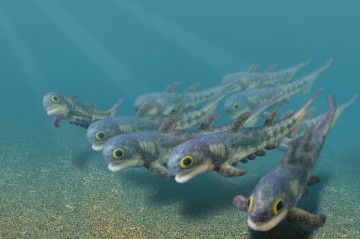
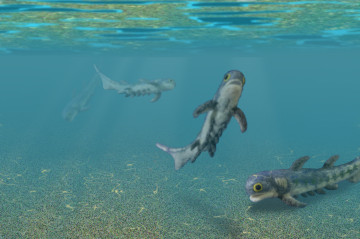
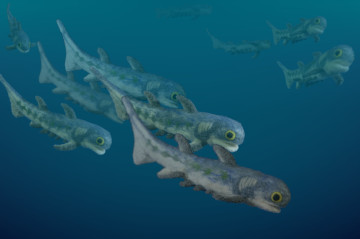
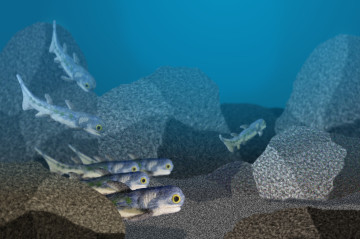
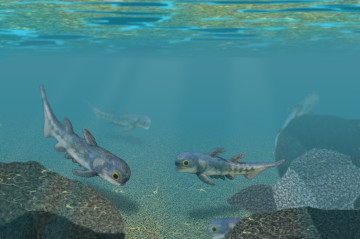
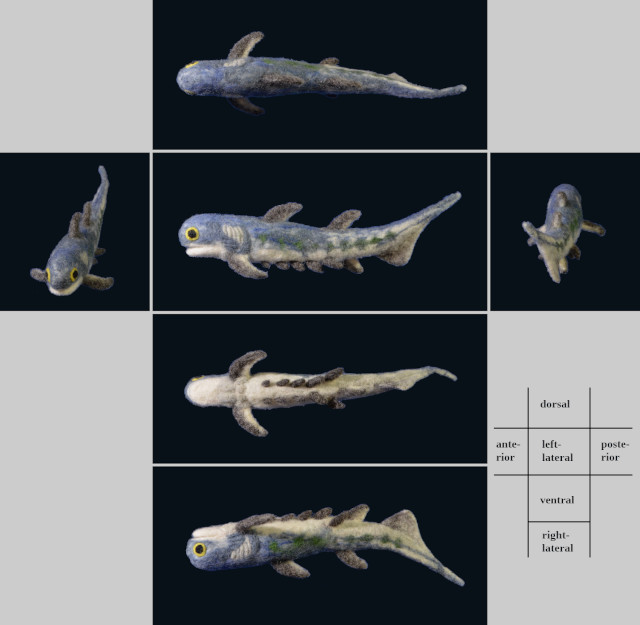
modified in March 2020.